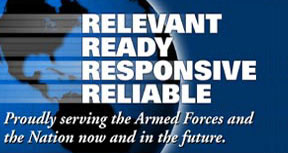I. Introduction
In the past, the US Army Corps of Engineers (USACE) has focused on managing sand at coastal projects on a project-by-project basis. This approach to sand management may not adequately consider the impact of individual projects on down drift projects. To address this issue, the USACE has initiated efforts to assess the benefits of managing sediment resources as a regional scale resource rather than a localized project resource. The concept of Regional Sediment Management (RSM) is a result of the 67th meeting of the Coastal Engineering Research Board (CERB) held in May 1998.
In October 1999, the US Army Engineer District, Mobile (SAM), initiated the USACE Northern Gulf of Mexico Regional Sediment Management Demonstration Program. The goal of the demonstration program is to change the paradigm of project specific management to focusing on a regional approach in which the USACE as well as state and local agencies stop managing projects and begin "managing the sand." The objectives of the demonstration program are:
- Implement Regional Sediment Management Practices;
- Improve Economic Performance by Linking Projects;
- Development of New Engineering Techniques to Optimize/Conserve Sediment;
- Determine Bureaucratic Obstacles to Regional Sediment Management; and
- Manage in Concert with the Environment.
The SAM demonstration region is bounded by the St. Marks River, Florida, to the east and the Pearl River, MS to the west. The region encompasses approximately 375-miles of coastal shoreline including the MS Barrier Islands. The region includes 14 major Federal projects (Panacea Harbor, Carrabelle Harbor, Apalachicola Bay, Port St. Joe Harbor, Panama City Harbor/St. Andrew Bay Entrance, East Pass, Pensacola Pass, Perdido Pass, Mobile Bay Entrance/Dauphin Island, Bayou La Batre, Pascagoula Harbor, Biloxi Harbor, Gulfport Harbor, and Pass Christian Harbor), the Panama City Beach Nourishment project, eight State parks, the Gulf Islands National Seashore, Eglin and Tyndall Air Force Bases, Pensacola Naval Air Station, Naval Station Pascagoula, Keesler Air force Base, Gulfport Naval Sea Bee Base, and the Supervisor of Shipbuilding, Conversion, and Repair, USN Gulf Coast, as well as many cities and counties. To accomplish the RSM goal, it is essential that partnering and coordination with agencies interested in the management of this coastal region be achieved.
The product of the RSM demonstration program is a Regional Sediment Management Plan consisting of a calibrated regional sediment budget, a calibrated numerical regional prediction system, and a regional data management and Geographic Information System. These tools will assist in making management decisions and increase benefits resulting from improved sand management throughout the region.
A RSM Technical Working Group (TWG) was established with members from State and Federal Agencies in Alabama and Florida and academia. The purpose of the TWG is to assist in development and implementation of the RSM Demonstration Program.
The demonstration region was divided into nine Sub-Regions , which are coincident with the Florida Department of Environmental Protection Sub-Regions for the Florida Panhandle. The demonstration initiatives were first identified to characterize the overall region, and localized Federal and State projects were then identified within each sub-region.
II. Approach: Region - Sub-Region - Project
- Implement Demonstration Initiatives
- Monitor Initiatives for performance
- Evaluate and Modify Initiative
- Evaluate based on expected performance
- Modify demonstration initiative based on evaluation
- Implement Modified Demonstration Initiative
The program approach was developed by identifying needs to characterize the overall demonstration region in an effort to evaluate and improve sand management. The region was then divided into sub-regions based on geographic or geologic information, and/or sediment transport patterns over an area. Problems associated with the Federal and State projects located in each sub-region were then identified. The demonstration initiatives were developed to resolve the identified problems, improve performance and improve sand management thought the sub-region.
The region was divided into the following Sub-Regions:
- Turkey Point to St. Marks River
- R141, Gulf Co. to Turkey Point, Franklin Co.
- St. Joseph Pt. to Money Bayou, R141, Gulf Co.
- R99, Bay Co. to Palm Point, R31, Gulf Co.
- R5, Bay Co., to R99, Bay Co.
- Okaloosa/Walton Co. Line to R5, Bay Co.
- Alabama to Okaloosa/Walton Co. Line
- Alabama State Line to 2 miles east of Fort Morgan Pt.
- 2 miles east of Fort Morgan Pt. to the west end of Dauphin
- Mississippi Gulf Coast Barrier Islands
- Mississippi Gulf Coast
The demonstration initiatives identified within the Sub-Regions are:
- Mobile Bay/Dauphin Island
- Perdido Pass
- East Pass
- Eglin AFB
- Panama City
- Panama City beaches
- Apalachicola River Sand
The approach begins by implementing demonstration initiatives based on our current understanding of the projects. Once implemented, monitoring is performed to quantify changes in the project, sub-region, and region, and data are used to evaluate the performance of the demonstration initiative. Results of the evaluation are used to modify, if necessary, the project, sub-region, and region demonstration initiative. The modifications are then implemented and monitored to evaluate the performance of the modified initiative.
As obstacles are encountered on implementation of project, sub-region, and/or region initiatives, the CERB will be utilized to overcome or mitigate those obstacles. As tools are needed to improve our ability to predict change, the Coastal and Hydraulics Laboratory and others will be utilized to develop new tools and/or assist with evaluations.
The following primary tools are required to evaluate the performance of demonstration initiatives and to develop any necessary modifications:
- A sediment budget for each project and sub-region. The project and sub-region information will be combined to create the regional sediment budget.
- Hydrodynamic tools for evaluating sediment transport and shoreline change at projects, sub-regions, and at the regional scale.
- A data management and analysis tool for organizing historic data, new data, and results of data and model analysis. The tool will be necessary for sharing information with demonstration program co-sponsors.
III. Products
- Regional Sediment Management Plan
- Working Regional Sediment Budget
- Calibrated Regional Prediction System
- Regional Data Management and Geographic Information System


